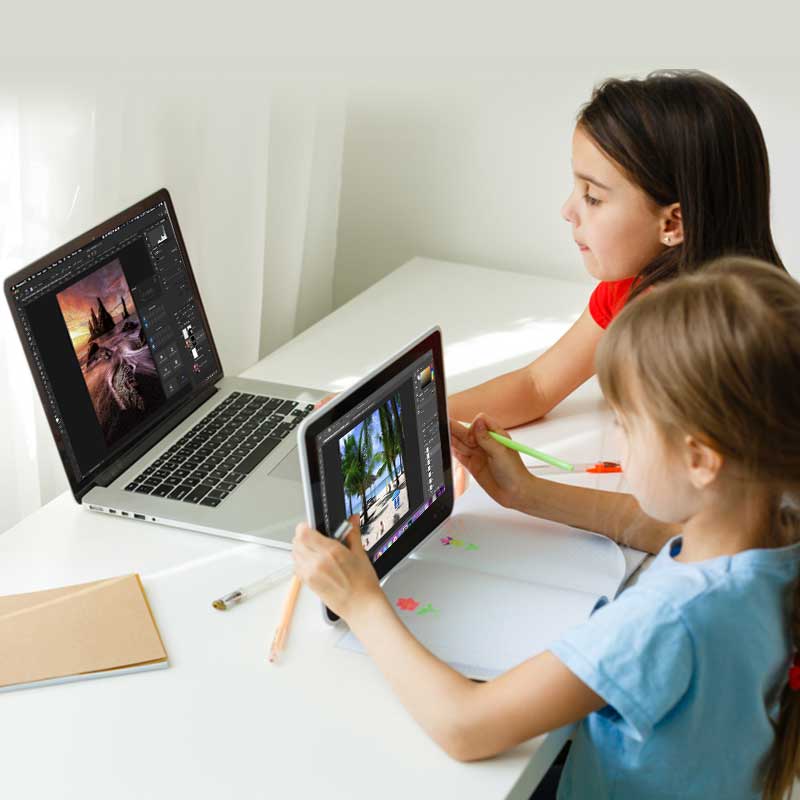Principles of Design
Looking to enhance design skills in students?

According to the latest trends, one of the primary skills that jobs of the future will require is design skills. The National Education Policy 2020 emphasises on equipping students with essential skills like sense of aesthetics and art, creativity, innovativeness, problem solving, digital literacy, design thinking, coding, and computational thinking at an early age to make them future-ready.
Here are some of the principles of design that will help students to create their own masterpiece:
Balance
Composition refers to how one arranges & places the (design) elements like line, shape, colour, texture, and space on a picture/image/artwork/page. Balance is the visual weight of these elements; it gives a sense that the image is stable. Students can use symmetry to achieve balance in their composition; for instance, they can arrange/place the same elements in the same position on both sides of the composition, as in a mirror-image, or two sides of a face.
Unity
Unity refers to the harmony produced by all the elements in an artwork. For instance, students can use similar colours that match and integrate elements to make it appear as if they belong together. Lack of unity makes the design of the artwork, cluttered and confusing to the viewer and fails in conveying a clear message.
Contrast
Contrast refers to the difference between the elements in a composition, such that each element is made stronger in relation to the other. For instance, students can use negative/positive space or place complementary colours side by side to create contrast and attract the viewer's attention to their artwork. An example of contrast is Notan, a concept that refers to the Japanese idea of balanced light and dark areas in a composition; familiar symbol illustrating this concept includes the circular yin and yang form from Eastern philosophy (the round image with interconnected teardrop-like shapes, one black and the other white.
Emphasis
Students can create emphasis by designing/creating an area of the composition that is visually dominant and attracts the viewer's attention; it can be achieved by creating contrast in the composition.
Movement
Students can create a sense of movement in their artwork using curvy or diagonal lines, either real or implied, by edges, by repetition, by the illusion of space, by mark-making.
Pattern
Students can use repetition to create a pattern. Some classic patterns include spirals and grids. Zentangle – a popular drawing practice – consists of shapes with recurring patterns from a combination of lines, points, simple curves, and circles.
Rhythm
Students can create rhythm using elements like diagonal lines repeatedly, not in a specific pattern but with variation that gives the feeling of an organized movement. While pattern demands consistency, rhythm relies on variety.
ICT 360 in alignment with NEP, provides ICT curriculum with ready-to-use content, design and computational thinking approach to projects as well as interdisciplinary learning material on an online platform that caters to today’s relevant technologies and future skills requirements. It is designed to help teachers improve their instructional practices with 21st century teaching skills through train-the-teacher program, build a strong foundation to empower students with the ability and skills to design & create amazing things on their own in a fun & engaging environment, excel in academics and prepare them to be industry- and career-ready.
With 50+ partner schools across India, it aims to empower students with creativity, problem-solving, design and tech skills from an early age. These skills are essential for future job roles like Graphic Designers, AI & ML Specialists, Software & Applications Developers, Animators, Robotics Engineers, Data Analysts, and IOT Specialists.
Powered by Froala Editor